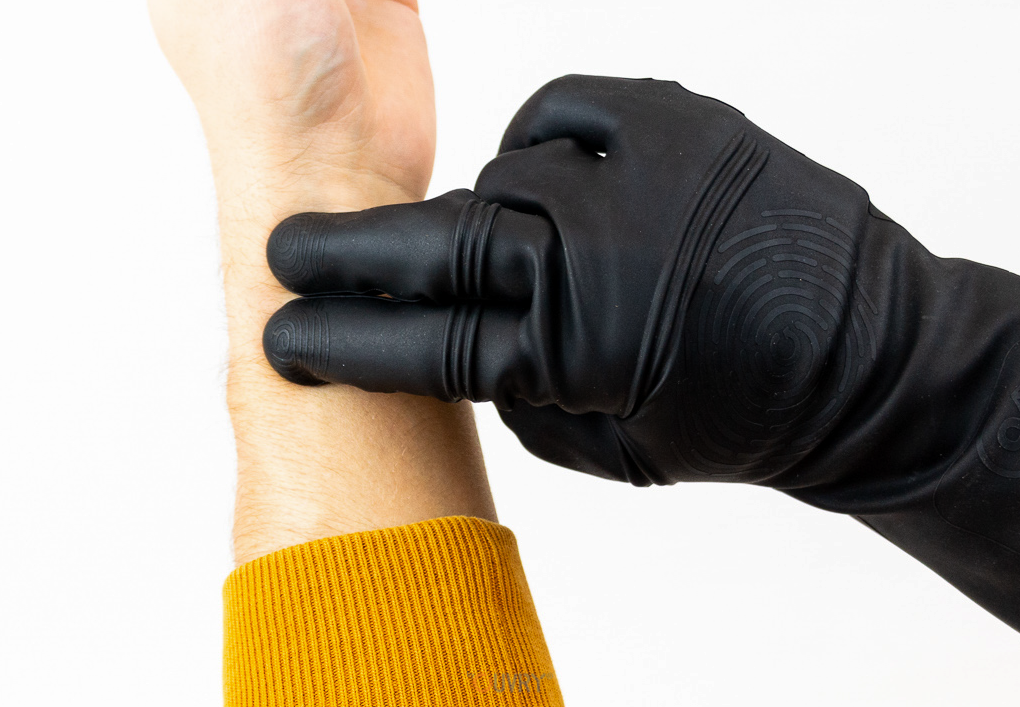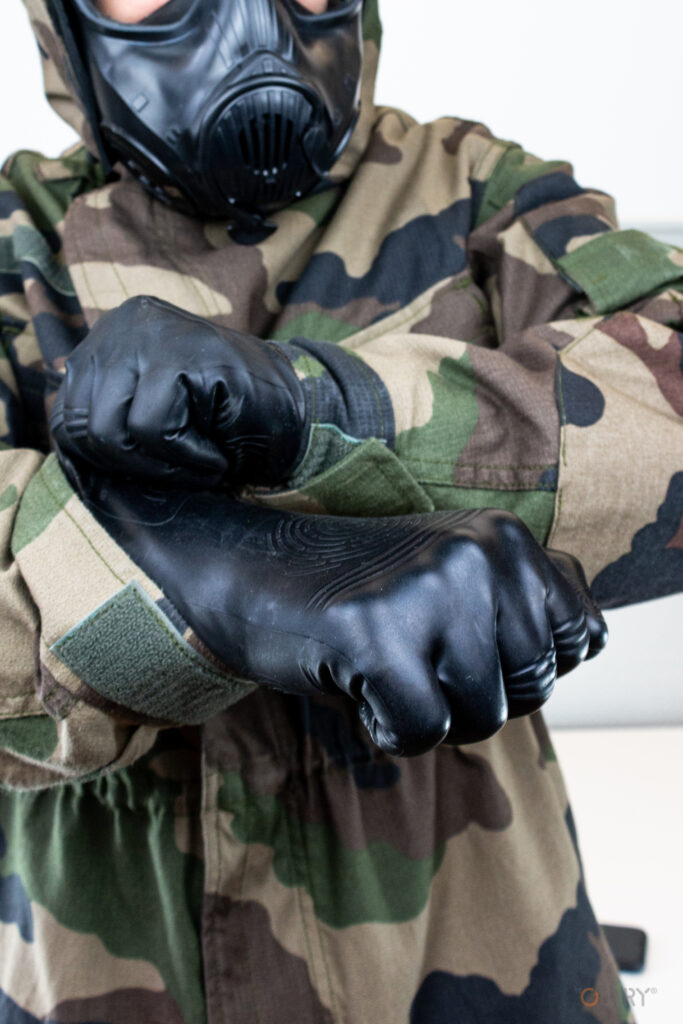What is it about?
We have already discussed in this blog the value of healthcare workers wearing “surgical” type gloves in the exercise of their profession and the possible danger of using them for non-healthcare workers during an outbreak such as the one we have just experienced with Covid-19.
Today we will discuss another type of personal protective equipment, CBRN protective gloves, and we will see that their properties must meet a large number of criteria referring to very specific standards.
CBRN protective gloves: what are they for?
The hand is one of the prehensile effector organs that allows us to grasp and manipulate objects. The importance of its integrity is fundamental, especially since the daily use of the hand tends to make us forget its complexity and fragility.
The skin that covers our entire body, and therefore the hand, plays a fundamental role in our physiology:
- thermal regulator (the energy taken from the skin to evaporate sweat allows it to cool down during thermoregulation phenomena);
- protection against infections thanks to the presence of commensal flora;
- sebum production for waterproofing ;
- sensory detector (temperature, pain, pressure) ;
- vitamin D production;
- excretion of nitrogenous products…
When chemicals come in contact with the skin of the hand, they can remove the protective sebum layer and penetrate deeper into the dermis, even infiltrating the body through the vascular system. Chemical burns always have significant adverse consequences. Some products such as detergents can cause severe allergic reactions…
It is therefore essential to protect the hand with gloves appropriate to the risks involved.
CBRN gloves protect the hands, and more specifically those of personnel working in contaminated environments CBRN (Nuclear, Radiological, Biological and Chemical). They must therefore be resistant to a wide range of toxic chemicals in liquid, gaseous or aerosol form.
Let’s add that they must also be mechanically resistant while allowing the accomplishment of delicate technical gestures such as the use of digital tablets or medical equipment. A real challenge…
The material
The glove must interpose a physical barrier between the skin and the chemical. This barrier is obtained by the material, its thickness and its design.
There are several materials that can be used to manufacture gloves, such as latex, nitrile, neoprene, PVC, PVA, butyl and fluorinated materials. Among all these materials, butyl, which is a synthetic rubber (isobutylene-isoprene copolymer), has good resistance to strong acids, ketones, esters, glycol ethers, amines and other aldehydes…. On the other hand, its resistance to aliphatic, aromatic and halogenated hydrocarbons is less good. This material is therefore well suited to protection against toxic and corrosive chemicals used in industrial environments.
The comfort
The gloves must be comfortable, adjusted to the hand, neither too tight to not hinder movements, nor too loose to have precise gestures. While being resistant to mechanical phenomena and chemical products, they must have an external structure that allows them to hold an object without slipping, to handle fragile and precise objects such as digital tablets, or even to perform auscultation of a patient, take a pulse or insert an infusion…
The impermeability required for this type of protection is incompatible with the elimination of sweat inside the glove. Wearing a cotton underglove reduces this discomfort.
The OG05® butyl glove
This glove, manufactured by Ouvry®, meets all the normative requirements of a protective glovecontre les produits toxiques chimiques industriels ainsi que contre les agents chimiques du NRBC.
Description
Made of a 0.5 mm thick butyl molded part by injection process, it has gussets at the thumb, index and middle finger joints to improve dexterity. A textured pattern on the fingertips, palm and back of the hand acts as a “grip” for good handling of objects. However, there is no grip on the tips of the index finger, middle finger and thumb, which, given the thinness of the butyl, makes it possible to take a patient’s pulse. These gloves have been granted an EU type certificate according to the 2016/425 “Personal Protective Equipment” regulation.

The waltz of standards
Physical properties of the glove
The gloves were tested against a wide range of standards to determine compliance with dimensions, dexterity (the smallest pin picked up by the glove measures 5 mm, i.e. a level 5/5 result), resistance to abrasion, cuts, tearing and perforation. Electrostatic properties, flame behavior, thermal transmission by contact were also measured. The contact with the skin imposes a measurement of the harmlessness, by measurement of the pH, the concentration of cadmium, phthalate, polycyclic aromatic hydrocarbons (PAH), organotin.
Chemical, biological and radiological protection performance
The following characteristics were measured: waterproofness, resistance to permeation of industrial toxics (i.e. diffusion at the molecular level of the chemical through the materials), effectiveness against ionizing radiation and radioactive contamination, and the ability of the gloves to protect the wearer against bacteria, fungi and viruses.
With regard to resistance to chemical warfare agents, the gloves have been tested according to NATO standard AEP 38 on HD, GD and VX at times exceeding 24 hours.
All results for these standards were in compliance.
Use and maintenance
Glove protection is effective if properly used and maintained.
The information concerning the use must be known by the user (performance, limit of use, meaning of the markings…).
As these gloves are reusable, it is necessary to observe them well before reusing them in order to detect premature aging (cracking, leakage, black spots of mould…). In case of bad condition, they must be thrown away irretrievably.
The use must be correct and in particular it is necessary to pay attention to their installation and to the moment of removing them. Never touch a part of the body with a contaminated glove (despite reflex gestures…!).
Cleaning is done with warm soapy water and the gloves must be dried well before storing them in an appropriate environment.
Wash hands after use.
Do not share gloves, otherwise you will also share hand-carried infections!
Conclusion
As we have just seen, the normative aspect is very important. The standards are numerous but indispensable to obtain a reliable and safe product.
Autor: Prof. François Renaud



